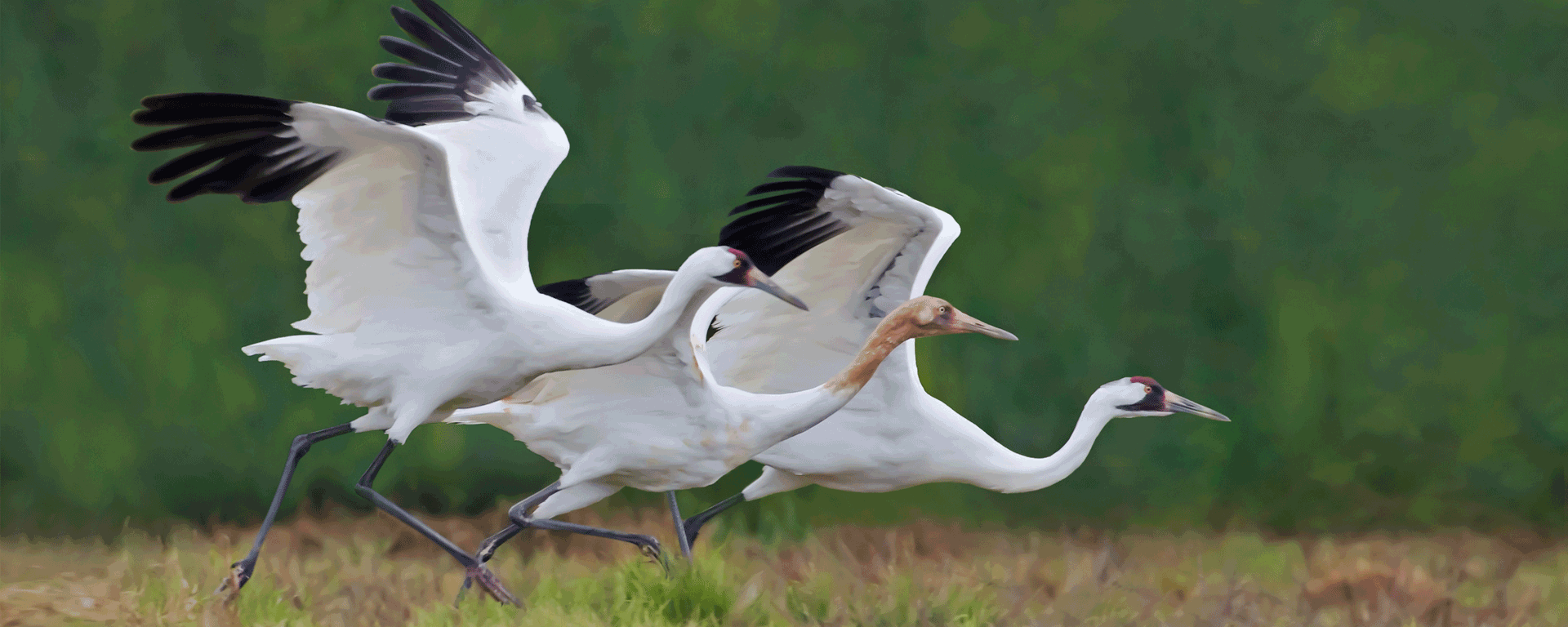An abandoned egg from a wild nest in Wisconsin was given to surrogate parents in Virginia
:focal(904x602:905x603)/https://tf-cmsv2-smithsonianmag-media.s3.amazonaws.com/filer_public/b7/4a/b74a484d-52aa-4940-96e6-e6d592f04c06/picture1_3.jpg)
On May 26, and endangered baby crane hatched at the Smithsonian Conservation Biology Institute Chris Crowe, Smithsonian Conservation Biology Institute
The first ever endangered whooping crane hatched at the Smithsonian Conservation Biology Institute (SCBI) is thriving after a month of growth, according to a statement released by the institute.
An egg was found abandoned in a wild nest in Wisconsin and given to a pair of whooping cranes named Tehya, 16 years old, and Goliath, 25 years old, at SCBI. The institute is the National Zoo’s research facility in Virginia. Tehya and Goliath were paired together to produce new offspring, but the couple had recently laid two infertile eggs. As the birds’ keepers awaited the new egg’s arrival from Wisconsin, they swapped out the infertile eggs for fake ones so the pair could continue their parenting behaviors. The SCBI’s bird team then took in the live egg on May 18 and on May 26, the baby crane hatched, per the statement.
Baby whooping cranes are also called colts because of their long legs, writes Dana Hedgpeth for the Washington Post. They fledge at around 80 to 100 days old, but stick near their parents’ territory for up to nine months. Staff are allowing the colt to bond with its parents without interference, per the statement.
“The bird team is encouraged by the colt’s growth and report that the adults are protective and attentive to its needs,” per the SCBI. “Staff continue to closely monitor the colt and report that it appears healthy, alert and curious about its surroundings.”
At 5 weeks old, the baby crane will get its first veterinary exam. Staff will confirm its sex and take a DNA sample.
The whooping crane, or Grus americana, is one of the rarest birds in North America. Before human hunting and habitat destruction devastated their numbers, as many as 15,000 to 20,000 whooping cranes may have lived in the wild, writes Megan Gambino for Smithsonian magazine. In 1870, only about 500 to 1,400 individuals lived in the wild. By 1941, approximately 21 wild whooping cranes were left. In the 1970s an effort began to rehabilitate the whooping crane population, much of it led by the ecologist George W. Archibald. Conservation efforts over the last 50 years have slowly led to a rise in their population. Now, about 700 live in the wild and 140 live in human care, per the statement.
Whooping cranes are North America’s tallest bird, standing at about 5 feet tall. They have a wingspan of 7.5 feet but only weigh about 15 pounds.
The only surviving historical crane population migrates from Canada to Texas and back each year. Another population, which was reintroduced to Florida, flew to Wisconsin with the help of a one-person aircraft for 15 years under a program called Operation Migration. The aircraft-guided migration ended in 2016, after the Fish and Wildlife Service said the cranes were not successful in producing babies and raising them.

source: smithsonianmag.com








